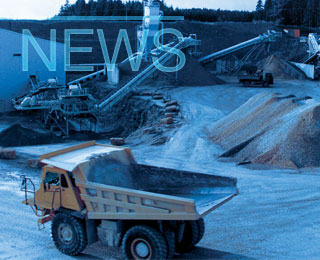Iranian cement sales slipped in June versus the previous month to come in at 5.353Mt, down from 5.568Mt in May but were up a notable 24 per cent YoY from 4.78Mt in June 2023, according to the Iranian cement association.
Producers manufactured 6.123Mt of cement and 6.76Mt of clinker, decreases of 3.4 per cent YoY and one per cent YoY, respectively, when compared with June 2023.
A total of 1.013Mt of cement and clinker were exported in June, a decrease of 11.1 per cent YoY, with cement exports increasing three per cent YoY to 0.509Mt, while clinker exports fell 21.9 per cent YoY to 0.504Mt.
January-June 2024
In the first half of 2024, cement consumption in Iran rose 9.8 per cent to 32.17Mt, up from 29.29Mt in the same period of 2023.
Cement production totalled 40.658Mt, up 3.9 per cent YoY from 39.14Mt in the first half of 2023. Clinker production was 37.994Mt, up four per cent YoY from 36.53Mt.
Cement and clinker exports totalled 6.59Mt in the January to June period, down 5.2 per cent YoY from 6.954Mt in the same period of 2023. Cement exports increased to 2.505Mt over the period, up 9.1 per cent YoY from 2.296Mt, while clinker exports were down 12.3 per cent YoY to 4.085Mt from 4.658Mt.
Outlook
The Iran cement sector has reported strong domestic growth in the first half of 2024 and is expected to expand further in 2024, after growing 10.9 per cent YoY in 2023. While urbanisation is continuing and population growth is stable at 0.7 per cent YoY according to World Bank forecasts, economic fundamentals are a mixed bag for the outlook.
The Iranian economy grew five per cent in 2023 and is forecast to expand by 3.2 per cent this year, according to the latest forecast from the World Bank. At the same time, the unemployment rate has fallen to a record low of 8.1 per cent.
However, an inflation rate of over 40 per cent is weighing on household purchasing power, dampening the property market. High mortgage costs and limited financing have further affected the market. Residential property transactions in Tehran were down 60 per cent YoY in 2023, according to local media reports. Reports also suggest government initiatives to bolster residential construction have fallen short.
International economic sanctions and geopolitical tensions are a further downward drag. Additionally, with China and Russia the main source of foreign investment in Iran’s building and infrastructure sector difficulties in these countries could destabilise some long-standing projects and may limit further investments into the Iranian construction sector.
Nevertheless, underpinning cement demand in 2024 will be the IRR3000trn (over US$6bn) of public works budgeted through to March 2025. Government spending accounts for around two-thirds of cement consumption. However, any further government revenue shortfall, such as that recorded last year due to lower than realised oil revenues, is a downside risk to such investment.
Alongside growing cement consumption and despite energy shortage concerns, Iranian cement production is expanding robustly, having grown by 9.6 per cent in 2023. The latest data from The Global Cement Report, 15th Edition, shows cement capacity totalling 103.7Mta, suggesting a capacity utilisation rate of 68.9 per cent, up from around 61 per cent in 2022.
While clinker exports are declining notably, cement exports are growing strongly. Clinker exports have trended downwards from their peak in late 2022, likely reflecting a sharp falloff in demand from Bangladesh. Bangladesh, Iraq, Kuwait and India are historically key markets for Iranian clinker.
The weak Iranian rial and strong growth in key export markets such as India will support cement exports in 2024. Meanwhile, the Russian cement association Soyuzcement notes that Iran's share of total cement imports amounted 16.7 per cent in 2023 up from 6.5 per cent in 2021.

Brazil's cement market expands 7% in 2M25
Cement dispatches in Brazil advanced by 7.6 per cent YoY to 5.107Mt in February 2025 from 4.748M...